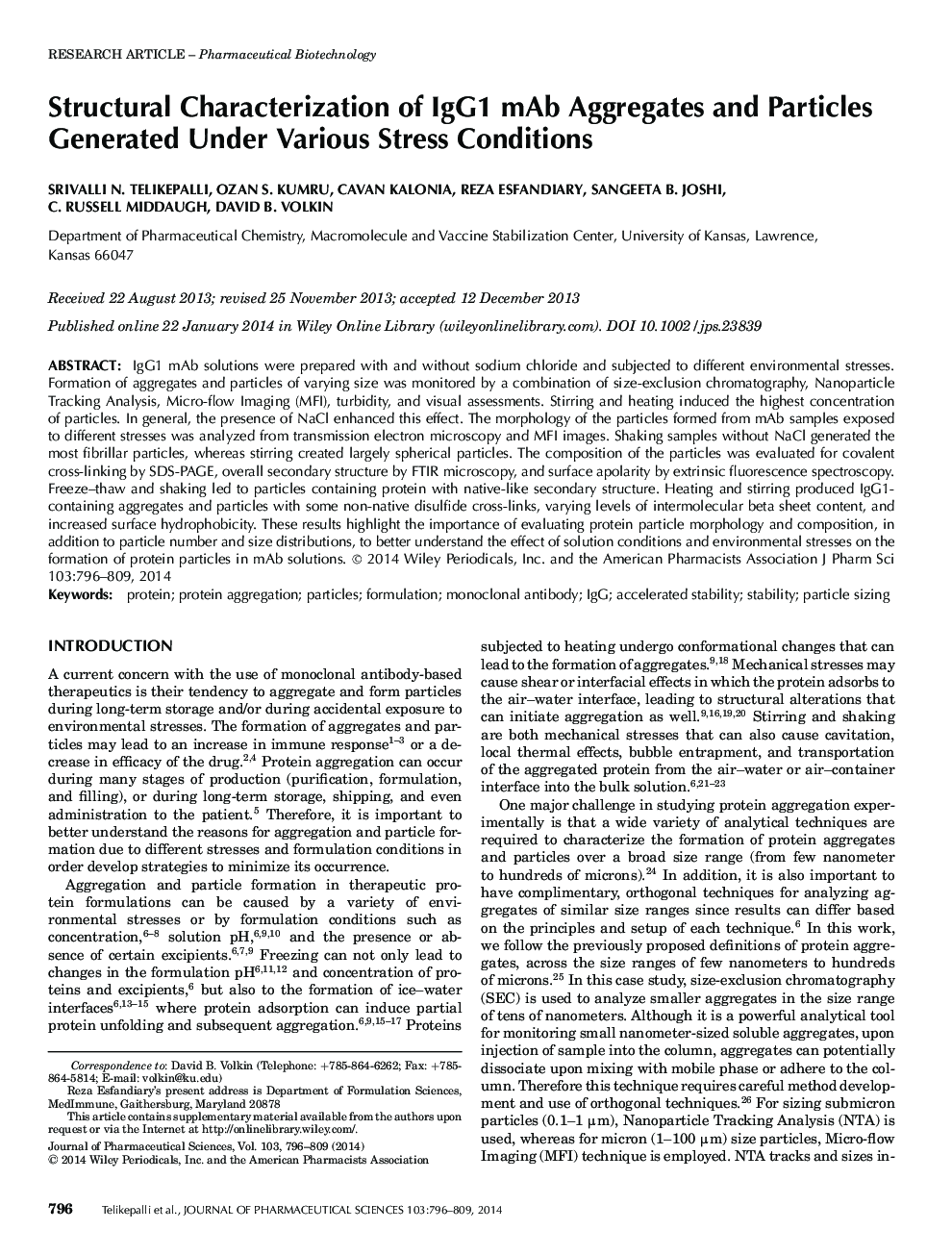| Article ID | Journal | Published Year | Pages | File Type |
|---|---|---|---|---|
| 10162555 | Journal of Pharmaceutical Sciences | 2014 | 14 Pages |
Abstract
IgG1 mAb solutions were prepared with and without sodium chloride and subjected to different environmental stresses. Formation of aggregates and particles of varying size was monitored by a combination of size-exclusion chromatography, Nanoparticle Tracking Analysis, Micro-flow Imaging (MFI), turbidity, and visual assessments. Stirring and heating induced the highest concentration of particles. In general, the presence of NaCl enhanced this effect. The morphology of the particles formed from mAb samples exposed to different stresses was analyzed from transmission electron microscopy and MFI images. Shaking samples without NaCl generated the most fibrillar particles, whereas stirring created largely spherical particles. The composition of the particles was evaluated for covalent cross-linking by SDS-PAGE, overall secondary structure by FTIR microscopy, and surface apolarity by extrinsic fluorescence spectroscopy. Freeze-thaw and shaking led to particles containing protein with native-like secondary structure. Heating and stirring produced IgG1-containing aggregates and particles with some non-native disulfide cross-links, varying levels of intermolecular beta sheet content, and increased surface hydrophobicity. These results highlight the importance of evaluating protein particle morphology and composition, in addition to particle number and size distributions, to better understand the effect of solution conditions and environmental stresses on the formation of protein particles in mAb solutions.
Keywords
Related Topics
Health Sciences
Pharmacology, Toxicology and Pharmaceutical Science
Drug Discovery
Authors
Srivalli N. Telikepalli, Ozan S. Kumru, Cavan Kalonia, Reza Esfandiary, Sangeeta B. Joshi, C. Russell Middaugh, David B. Volkin,
